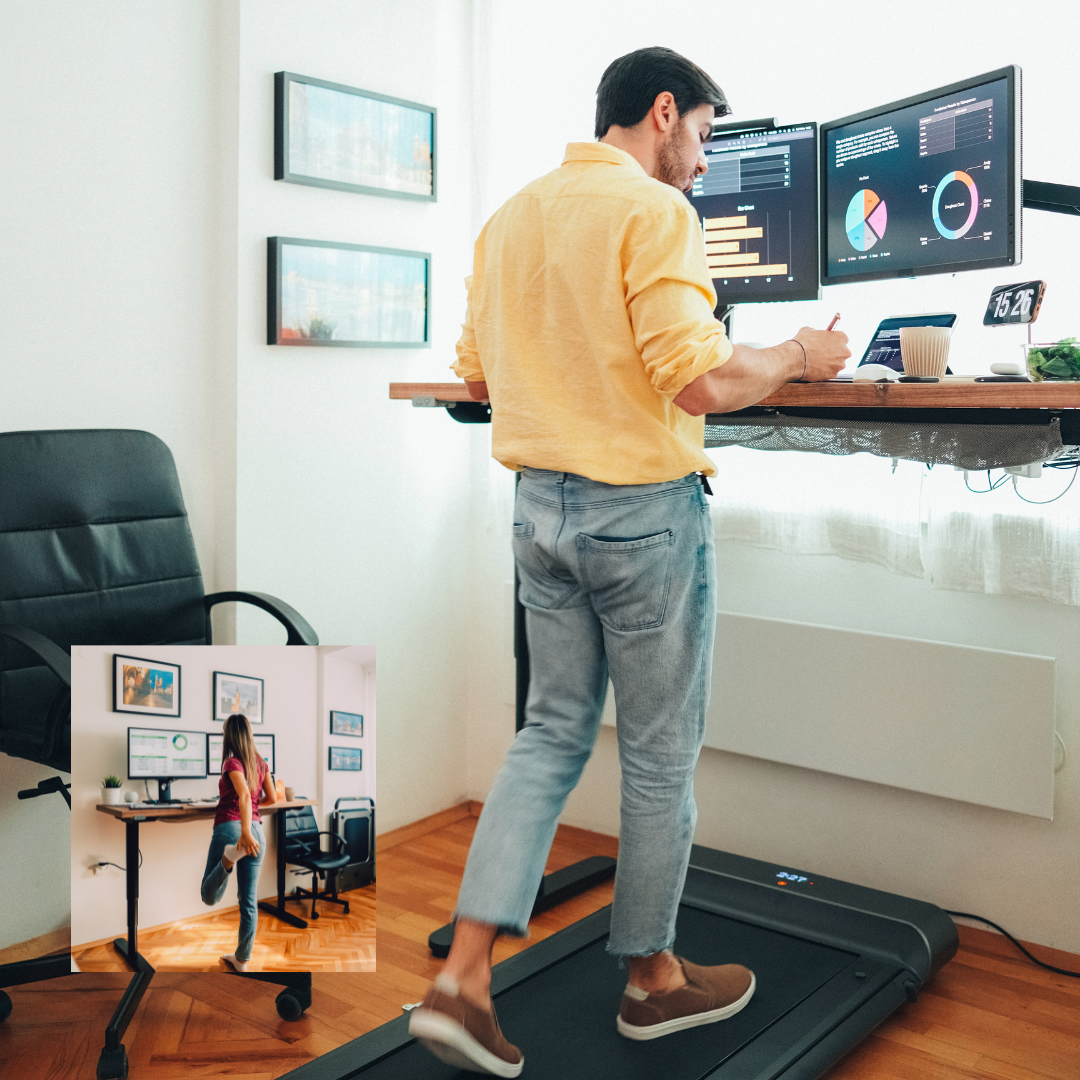By implementing these ergonomic best practices, businesses can enhance employee well-being, reduce the risk of injuries, and boost overall efficiency.
In an age where technology dominates our work lives and the lines between professional and personal spaces blur, the importance of creating a comfortable and efficient workspace cannot be emphasized enough.
Ergonomics can improve employees' health by reducing work-related injuries, most often caused by strains and over-exertion.
Adopt the following essential ergonomic guidelines to turn your workspace into a sanctuary of both comfort and efficiency.
Customizable Workstations
One size does not fit all, especially when it comes to workstations. At NYRC, we advocate for customizable workspaces that cater to individual needs. Invest in adjustable desks and chairs to accommodate various body types and preferences. Employees should be able to tailor their workstations to support a healthy posture, reducing the risk of musculoskeletal issues.
Staples Canada has put together a fantastic video from an Ergonomics expert to help you with this.
Prioritize Proper Seating
The importance of a good chair cannot be emphasized enough. Opt for chairs that provide adequate lumbar support, adjustable height, and the ability to recline. Employees should be encouraged to sit back in their chairs, ensuring their feet are flat on the floor and their knees are at a 90-degree angle. This promotes proper blood circulation and reduces the strain on the lower back. Our experts have seen many cases of remote workers using make-shift workspace seating including kitchen chairs and sofas leading to pain and discomfort that could have been prevented.
Invest in Quality Accessories
Key accessories, such as keyboards and computer mice, play a significant role in creating an ergonomic workspace. Ergonomic keyboards with split designs and negative tilt angles help minimize strain on the wrists and forearms. Additionally, a mouse with a comfortable grip and customizable sensitivity settings can prevent repetitive strain injuries. Check out Amazon for accessories to make your workspace more comfortable such as footrests, anti-fatigue mats, and padded armrests.
Optimal Monitor Placement
Proper monitor placement is crucial to prevent eye strain and neck pain. Monitors should be positioned at eye level, approximately arm's length away. This reduces the need for constant neck tilting and minimizes the risk of developing discomfort or long-term issues. Adjustable monitor arms can be a valuable addition to allow employees to find the perfect height and angle for their screens - or try using a few books or a cardboard box for a cost-effective solution.
Effective Cable Management
A clutter-free workspace not only enhances aesthetics but also reduces the risk of accidents and distractions. Implementing effective cable management solutions helps keep wires organized and out of the way. This not only improves the overall visual appeal of the workspace but also prevents tripping hazards and allows for easy access to outlets and peripherals.
Mindful Lighting Choices
Proper lighting is often overlooked but can significantly impact productivity and well-being. Natural light is ideal, but when that's not possible, choose lighting that mimics natural daylight. Adjustable desk lamps with warm and cool colour temperatures enable employees to personalize their lighting based on their tasks and preferences. Avoid harsh, overhead lighting that can cause eye strain and headaches.
Encourage Movement
Sedentary work habits can lead to a range of health issues. Encourage employees to incorporate movement into their daily routines. Adjustable sit-stand desks provide the flexibility to switch between sitting and standing throughout the day, promoting better circulation and reducing the risk of prolonged sitting-related health problems.
Movement Tips: Take a walk at lunch, don’t eat at your desk. Schedule 2-3 10-minute walks throughout the day - put these in your calendar ahead of time so you can make it happen. Make some of your meetings ‘walking meetings’ whenever you can.
Regular Ergonomic Training
Investing in ergonomic furniture and accessories is just the first step. Regular training sessions on proper ergonomic practices can empower employees to make the most of their workspaces. Educate them on the importance of maintaining good posture, taking breaks, and utilizing adjustable features to their advantage.
NYRC recognizes the pivotal role ergonomics plays in fostering a healthy and productive work environment. By implementing these ergonomic best practices, businesses can enhance employee well-being, reduce the risk of injuries, and boost overall efficiency.
A well-designed and ergonomic workspace is an investment in the physical and mental health of employees, ultimately contributing to the success and longevity of the organization.



